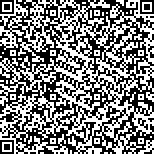| 引用本文: | 卢春光,周中良,刘宏强,阮铖巍,杨海燕.量测随机延迟下带非高斯噪声的目标跟踪算法[J].哈尔滨工业大学学报,2019,51(4):83.DOI:10.11918/j.issn.0367-6234.201805168 |
| LU Chunguang,ZHOU Zhongliang,LIU Hongqiang,RUAN Chengwei,YANG Haiyan.A target tracking algorithm for zigzag maneuver target tracking with non-gaussian noises and randomly delayed measurements[J].Journal of Harbin Institute of Technology,2019,51(4):83.DOI:10.11918/j.issn.0367-6234.201805168 |
|
| |
|
|
| 本文已被:浏览 1300次 下载 1575次 |

码上扫一扫! |
|
|
| 量测随机延迟下带非高斯噪声的目标跟踪算法 |
|
卢春光1,周中良1,刘宏强1,阮铖巍2,杨海燕3
|
|
(1.空军工程大学 航空工程学院,西安 710038; 2.解放军95910部队,甘肃 酒泉 735000; 3.空军工程大学 空管领航学院,西安 710051)
|
|
| 摘要: |
| 为解决量测一步随机延迟及非高斯噪声条件下战斗机蛇形机动模式转弯角速度辨识问题,更好地实现蛇形机动的稳定跟踪,考虑到目标状态与转弯角速度之间相互耦合的特性,基于联合估计与辨识的思想,依据极大似然准则,提出了一种基于期望最大化的目标状态估计与转弯角速度辨识联合优化算法.该算法主体包含两个部分:E-step和M-step.在E-step,首先,通过充分考虑量测一步随机延迟特性及非高斯量测噪声,重新构造了粒子滤波器的似然函数,进而改进了粒子权重的更新公式,同时,为避免粒子贫乏现象的发生,将粒子群优化算法引入到重构的粒子滤波器当中进一步改进粒子采样过程;其次,将拒绝采样思想引入到后向模拟粒子平滑器当中,并相应地设置拒绝采样终止条件,优化后向模拟粒子平滑器,进一步提高平滑算法的执行效率;最后采用改进的粒子滤波器与后向模拟粒子平滑器进一步获取目标状态的平滑量;在M-step,通过采用牛顿迭代法极大化条件似然函数,从而获得转弯角速度的估计量,用于下一次算法迭代.通过E-step和M-step的不断迭代,进而获得转弯角速度的闭环形式的优化解.仿真实验结果表明,所提算法的目标状态估计与角速度辨识的精度均优越于传统的扩维法. |
| 关键词: 随机延迟 期望最大化 联合估计与辨识 粒子滤波 后向模拟粒子平滑器 拒绝采样 粒子群 |
| DOI:10.11918/j.issn.0367-6234.201805168 |
| 分类号:TN97 |
| 文献标识码:A |
| 基金项目:国家自然科学基金(61472441) |
|
| A target tracking algorithm for zigzag maneuver target tracking with non-gaussian noises and randomly delayed measurements |
|
LU Chunguang1,ZHOU Zhongliang1,LIU Hongqiang1,RUAN Chengwei2,YANG Haiyan3
|
|
(1.Aeronautics Engineering College, Air Force Engineering University, Xian 710038, China; 2.Unit 95910 of PLA, Jiuquan 735000, Gansu, China; 3.College of Air Traffic Control and Navigation, Air Force Engineer University,Xian 710051, China)
|
| Abstract: |
| To identify the turn rate of fighter Zigzag maneuver under one-step randomly delayed measurements and non-Gaussian measurements noise and to achieve better tracking performance, based on the idea of joint estimation and identification and Maximum Likelihood Estimation Criteria, a joint optimization algorithm based on expectation maximization for target state estimation and turning angular identification is proposed, which takes mutual coupling between target state and turning angular velocity into account. The algorithm basically contains two parts: E-step and M-step. In the E-step, the likelihood function of particle filter was firstly reconstructed by fully taking one-step randomly delayed measurements and non-Gaussian measurements noise into account, which improves the update formula of particle weight. Meanwhile, in order to avoid particle deficiencies, the particle swarm algorithm was introduced into the reconstructed particle filter to improve the sampling process. Secondly, the idea of rejection sampling was introduced into the backward simulation particle smoother, and the termination condition for rejecting the sampling was set accordingly, thus the backward simulation particle smoother was further optimized to improve the execution efficiency of the smoothing algorithm. Lastly the smooth estimation of the target state was obtained by using the improved particle filter and backward simulation particle smoother. In the M-step, a numerical optimization algorithm was used to maximize the conditional likelihood function, and the estimation of the turning angular velocity was thus obtained for the next iteration of the algorithm. The optimized solution of the closed-loop form of the turning angular velocity was obtained by the iteration of E-step and M-step. Simulation results show that the proposed algorithm performed better in state estimation and turn rate identification than the traditional augmentation method. |
| Key words: randomly delayed expectation maximization the joint estimation and identification particle filter backward simulation particle smoother rejection sampling particle swarm |
|
|
|
|







